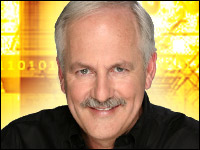
This was the first chance since Steve Jobs returned to Apple that Microsoft had to slam-dunk Apple. The biggest thing at Macworld was Tony Bennett. Windows 7 was releasing in Beta and reports have been glowing, with a number of the folks I travel with actually living on the pre-beta code and raving about it so this should have been like shooting ducks in a barrel. Palm was bringing out a new phone and a lot of folks thought they were simply done and not worth seeing, good lesson in the dangers of preconceptions here. Cisco was going to take a run at the gold standard in home music — Sonos — and the PC vendors went to war.
We’ll talk about how all of this worked out and conclude with my product of the week — the first Linux-based PC platform I think is truly right-headed.
Apple vs. Microsoft vs. Palm
At Macworld Apple demonstrated why Steve Jobs is so critical to their future. It was the worst Macworld since Steve Jobs came back. No real content and it was deadly dull. It contained some minor updates, an overpriced (in a market that is buying US$500 netbooks by the dozen) laptop, and the tardy elimination of DRM on iTunes. The only thing I walked away with is that Steve Jobs is now only a figure head who remains in place because the board knows Apple Stock will drop like a rock if investors figure out that he left, but he is clearly not there at the moment.
Microsoft’s keynote was so devoid of excitement that a 12-year-old girl named Sparrow, who had more stage presence than anyone else the company brought out, stole the show. Microsoft seemed to go out of its way to avoid building excitement; it even showcased the Halo update, Halo being one of the most popular Xbox properties, in a way that was excitement-free. For long parts of this I could swear I heard crickets. The next day they announced an offering out of Microsoft Labs that automatically created music that turned the lyrics you wrote into a song, presented right, that could have made this a success. I began thinking that this didn’t bode well for tech.
Palm owned CES. This company presented a phone that took all of what most of us didn’t like about the Android platform, and didn’t like about the iPhone, and liked about the old Palm platform, and created magic. Throughout the presentation folks around me gasped, applauded, or hooted. It felt like a Steve Jobs Apple event and, even at the end, they introduced that one more thing which, in this case was an intelligent inductive charger for the phone.
I can’t do justice to this phone in one paragraph but it was the star of the show and, if you search on the Palm Pre, you’ll see that the general consensus is this is an Android and iPhone beater. Palm created it by doing with Linux what Apple did with UNIX, designing hardware that was better looking than Google’s and more functional than Apple’s, and presenting it the way Steve Jobs would. It was brilliant, though it will compete with vastly better Android hardware and the third-generation iPhone. Still if Palm can do a better job presenting a product than Apple or Google can, Palm could own this market.
Cisco vs. Sonos
Sonos is the gold standard when it comes to moving music around the home. It’s like Apple except it doesn’t have the brand, the money, or Steve Jobs. But Sonos actually is ranked higher in quality, using NPS, than Apple is (80 to 60). The last to try to bring out a better product was Logitech, which failed miserably.
The Sonos music system is simply the easiest to use and provides the best whole home system that mortals can still afford. The line consists of a color screen remote control and two media extenders, one with and one without amplifier. And it is the only technology product I own my wife can consistently use successfully. Sonos recently brought out an iPod Touch and iPhone application that turned those devices into an incredibly cool remote control.
Cisco entered with a broader line of products. Its lineup consists of a color screen remote, three extenders (one an all-in-one with built-in speakers) and a Media Hub. Cisco doesn’t support as many music streaming services and doesn’t support the Mac yet, but its hardware offering is clearly deeper than Sonos has and it doesn’t require the expensive remote, making it less expensive in some configurations. But Cisco went on to articulate a vision surrounding its Visual Network strategy that integrated video, cell phones, and potentially automotive entertainment systems into an ecosystem where you could start listening or watching your media on one, and continue it on another. If it can execute on this vision, and Cisco has historically been rather impressive on execution, it could own this segment.
Dell vs. HP vs. Lenovo
I have never seen so many amazing PCs at one event than I saw at this CES. The best from Dell was a new line of XPS Studio Laptops trimmed in high-gloss paint, stainless steel and real leather. The one to get was the product sporting one of the first 16-inch 16×9 aspect ratio displays which are as short as a 13 inches (think airplanes) and panoramic in width. They also picked up on the green trend at the slow releasing a line of LED backlit monitors which were very bright and highly color accurate while being very power efficient. Finally they launched an AMD Dragon-based XPS desktop for under $1,000. The AMD Dragon platform packs a ton of performance into an affordable package and I’m a huge fan of dragons, so had to love the new AMD Dragon logo — they should have painted it on the side of the case.
HP released the coolest MMO gaming desktop I’ve ever seen. Called “Firebird” and sporting on-board Nvidia-based SLI graphics in a hybrid array with an integrated graphics chip that can do physics in gaming mode or switch on the fly to economy mode and do the graphics. It also released the first touch desktop system for business, giving HP touch leadership as we ramp toward the first touch version of Windows. This will be ideal for companies planning to move to Windows 7 early and given how old XP is not getting there are probably a number of companies that will soon have to start trials and HP will be the only game in town for them. Nicely done.
Lenovo released the first twin-screen workstation laptop with a built-in digitizing pad. You had to see this puppy because it was huge. The second screen nested in the back and would slide out next to the massive 17″ primary screen. The digitizer is for artists or engineers who plan to use this monster as the portable workstation it is designed to be and this has to be one of the most incredible notebook products I’ve ever seen. In addition, Lenovo brought out a line of ThinkVision monitors, all of which surpass the draft new energy star 5.0 certification, their best line of Ideapad consumer PCs ever, and an all-in-one PC that may be the thinnest in the market and had a Nintendo Wii-like control. Oh, and they also worked a tie-in to the really cool new “Star Trek” movie (I am so going to see that on the first day).
There was no clear winner — every one of these guys came to play and the market will decide who kicks the other’s butt. But, being a “Star Trek” fan going back decades, I can tell you where I was leaning.
Product of the Week: Hyperspace
How could you not like a product named “Hyperspace?” For a long time I’ve said that the only way for Linux to win on the desktop is to do what Apple did to Unix to it. Palm did this with its WebOS and, if it executes, there is no doubt it will be in the running for my product of the year in 2009. What Phoenix Technology did is take Linux and make it into what is likely the safest and fastest browsing experience you can get on a PC. Using a Virtual Machine approach, you load this on an existing Windows machine and when you need to get online fast, you boot to this environment. While you are browsing on the Web, Windows loads in the background, and when you are ready to go to Windows, you can then switch immediately.
It seems to improve suspend, even with Windows. But the real benefit in what is increasingly a hostile world is that this provides a secure browsing environment where Web attackers are physically blocked from the rest of your computer. 2009 is looking to be very hostile and this helps keep you safe which is why Phoenix Technologies’ Hyperspace is my Product of the Week.
Rob Enderle is a TechNewsWorld columnist and the principal analyst for the Enderle Group, a consultancy that focuses on personal technology products and trends.















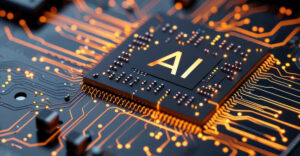
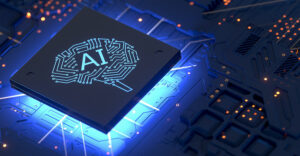


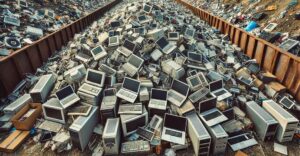
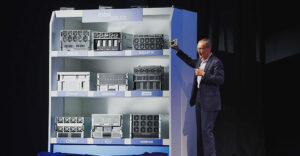

































Hmmm, where to start?
"an overpriced (in a market that is buying US$500 netbooks by the dozen) laptop"
The target market for $500 notebooks are NOT the people who by any stretch of the imagination who would be buying a 17" Pro laptop. It’s like saying "Who’s going to buy a steak when MacDonalds sells burgers for a buck?" Dumb and just plain stupid.
"The only thing I walked away with is that Steve Jobs is now only a figure head who remains in place because the board knows Apple Stock will drop like a rock if investors figure out that he left, but he is clearly not there at the moment."
Ya, like you can produce new and exciting products based on SOMEONE else’s imposed deadline? Killing their appearance at Macworld gets rid of the silly thing where people are reluctant to purchase certain Apple products at Christmas as there will be a product bump in early Jan. Hey what a great time to launch a new product! Just when everyone has spent out on Christmas! I think Apple were fed up with this limitation.
Palm. What can I say? Firstly no price. I wonder why that is? Secondly no product. They said it would be available in 1H09 but they couldn’t be pinned down to a launch ( I know the FCC is involved in the process and that can take time but hey ). Thirdly a smoke and mirrors demo that really seemed to be there just to get someone to buy the company. By smoke and mirrors it seems that this product was designed by listing all the complaints that people have against the iPhone and then ticking those boxes. So geek nirvana. The development environment is a joke – Apple had 9/10’s of this in the original iPhone and people were up in arms. They are relying on a faster ARM chip to make it run faster.
Finally. drag some people who were at Apple and use Apple developed technology (WebOS is built on Webkit framework developed by Apple and then given back to the community) to produce a very small Mac running Dashboard – and call that an OS? Hmmmm. We shall see.
Also Palm have just executed the single most spectacular company suicide in corporate history since Osborne. Who is going to buy a Palm in the next 6 months with this thing coming out?
As I say, drink the Kool-Aid, but it looks like Palm are setting themselves up to be sold to the highest bidder. Geeks: a product is not made by ticking boxes be happy that someone is "listening" to you but YOU are wrong.
In a market buying Civics you don’t bring out a Hummer. That was the point I was trying to make. $2,700 laptops aren’t selling at the moment, $500 laptops are selling out.
I support their leaving MacWorld, really badly timed show and I’m pushing to have CES moved as well. January for something like this is just stupid, but the point was on Jobs not MacWorld.
Recall whan Apple launched the iPhone 2 years ago it was a brick, a lot of folks in Apple didn’t think it could be made to work. I got to play with the Palm Pre, everything worked. They still have to get the App store up, find media content (need an iTunes), and Sprint wouldn’t be my first choice for a carrier (but neither would AT&T). Price is typically not announced, and wasn’t from Apple, until the thing is about to be sold.
Take a bunch of people, put a dashboard on BSD UNIX and call it an OS… Well that worked didn’t it, why wouldn’t this work.
Double Standards… Ya Think…
They just got $100M, I think that will last them until this phone ships. They pulled the plug on the Centro and still have a nice Microsoft Mobile product which should continue to sell.
When we learned of the iPhone did folks stop buying iPods and save their money? We knew the 2nd generation iPhone was coming far in advance, didn’t seem to hurt 1st generation sales much.
They launched early much like Apple launched early so they could move the stock price. Now if you think Apple was stupid for doing the same things, you’d be wrong but at least you’d be consistent.
Basically Palm is just reading from the Apple play book, if it worked for Apple why can’t it work for Palm?